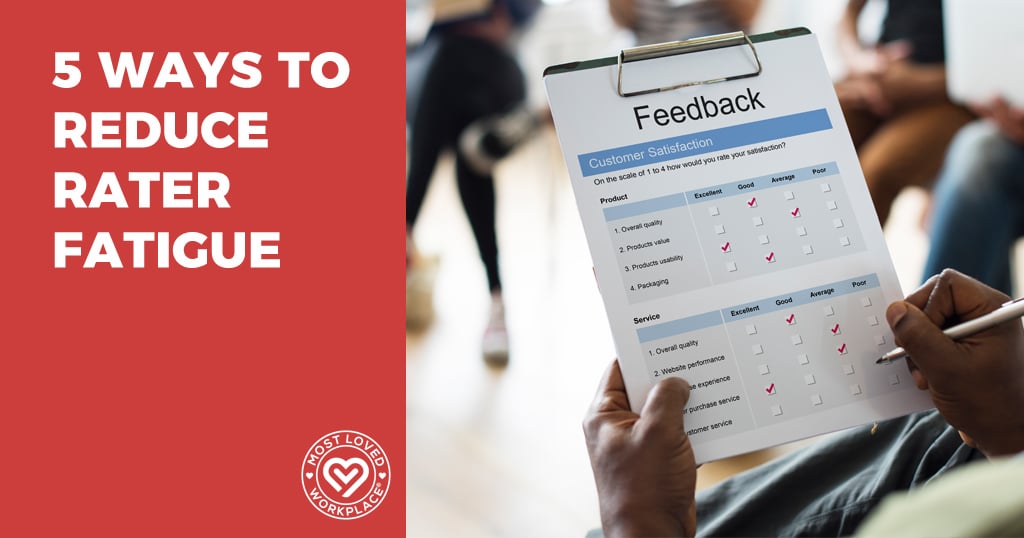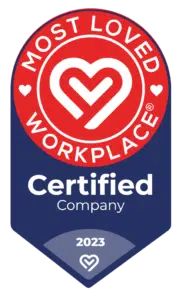5 Ways to Reduce Rater Fatigue
Rater fatigue is a common challenge in conducting performance evaluations effectively. For managers and HR leaders, it’s a balancing act—providing regular feedback to employees while maintaining their well-being. At the same time, employees increasingly seek real-time feedback, complicating the evaluation process.
The consequences of rater fatigue can be profound, often leaving HR leaders questioning the reliability of performance reviews. This article will explore five practical strategies to alleviate rater fatigue and ensure the performance evaluation process remains efficient and meaningful.
Table of Contents
Set Clear and Realistic Expectations
One of the primary reasons for rater fatigue is the unrealistic expectations placed on evaluators. To address this, it’s crucial to ensure that raters have clear, realistic expectations regarding the evaluation process. Communicate the number of evaluations they are expected to complete and the associated deadlines. Providing clear instructions and guidelines can further streamline the process.
Taking an innovative approach, consider proactively engaging with each team member before the review process begins. It helps gauge their readiness and allows you to answer any questions or concerns they may have.
Ensure that employees comprehend the survey questions and understand how to interact with respondents who provide feedback on 360-degree reviews. If your organization has introduced significant changes to the performance review process, raters, and their direct reports must understand them.
Provide Comprehensive Training and Support

To alleviate rater fatigue, it’s essential to equip raters with the tools and knowledge they need to conduct effective evaluations. It means offering them comprehensive training and ongoing support throughout the evaluation process. Resources such as training modules, coaching sessions, and examples of effective evaluations can significantly enhance their skills and confidence.
Moreover, considering leadership or manager training can be a game-changer. Equip your leaders with the necessary tools and knowledge to navigate the evaluation process. They can benefit from learning how to use the evaluation tools efficiently, conducting a dry run of the process before performing evaluations with employees and mastering the art of discussing performance issues with their direct reports. This investment in their skills reduces rater fatigue and leads to more insightful and constructive evaluations.
Streamline the Evaluation Process
Simplicity can be a great ally in the battle against rater fatigue. To make evaluations more manageable, consider streamlining the process. Implement a straightforward rating system, focusing on essential competencies, and provide clear, concise instructions to raters.
While the common notion may suggest limiting the number of reviewers, this can often backfire in practice. Survey fatigue can also affect your employees, and answering a 360-degree survey about their peers can help them feel that their feedback is valued and appreciated. Respondents often provide valuable insights that can aid in mitigating rater fatigue.

Building a Thriving Workplace Culture!
Discover how to leverage the right technology and implement a proactive strategy that cultivates talent and facilitates team collaboration.
Implement a Rater Rotation System
An innovative strategy to combat rater fatigue is introducing a rater rotation system. Instead of overburdening a single rater with numerous evaluations, distribute the workload more equitably. This approach ensures that every individual rater is responsible for an appropriate number of evaluations.
Keep a vigilant eye on your team’s engagement with review requests and respondents’ responses. If you observe an individual consistently required to provide more answers, it may be a sign that rater rotation is needed. Alternatively, consider implementing a 360-degree feedback process where you seek responses from various individuals within your organization. This diversified approach can alleviate the burden on individual raters and provide more holistic feedback.
Incentives and Recognition
To combat rater fatigue, consider offering incentives and recognition to raters for completing evaluations thoroughly and accurately. It can include bonuses, gift cards, or participation in recognition programs. Even simple acts of acknowledgment can have a significant impact.
Publicly recognizing raters with a shoutout in a company-wide email, on communication platforms like Slack or Teams, or during an end-of-year awards ceremony can make them feel appreciated. The work involved in the evaluation process, which often feels like an additional task alongside their core responsibilities, deserves celebration.
Final Word
Alleviating rater fatigue is crucial for the effectiveness of performance evaluations and the well-being of those involved in the process. You can ensure a more efficient and effective evaluation process by setting realistic expectations, providing training and support, streamlining the evaluation process, implementing a rater rotation system, and offering incentives and recognition.
Incorporating these strategies can significantly reduce rater fatigue during performance evaluations and promote a more efficient and effective process. Additionally, tools are available to streamline performance reviews further, making them more manageable and insightful. All of this can help your company become a Most Loved Workplace.

Image by peoplecreations on Freepik
But the journey toward becoming a Most Loved Workplace® and achieving excellence begins here. Get Certified for Free as a Most Loved Workplace® to gain valuable insights and data for immediate decision-making while reducing rater fatigue. Take the next big step and Apply to Become one of Newsweek’s Top 100 2024 Most Loved Workplaces® in America, the UK, or globally, and seize the opportunity to apply for Newsweek’s Excellence 1000 Companies, setting your organization on the path to recognition and success.

Louis Carter is the founder and CEO of Best Practice Institute, Most Loved Workplace, and Results-Based Culture. Author of In Great Company, Change Champions Field Guide, and Best Practices in Talent Management, as well as a series of Leadership Development books. He is a trusted strategic advisor and coach to CEOs, CHROs, and leaders of mid-sized to F500 companies – enabling change and steering employer brand development together with highly effective teams, leaders, and organizations as a whole.



0 Comments